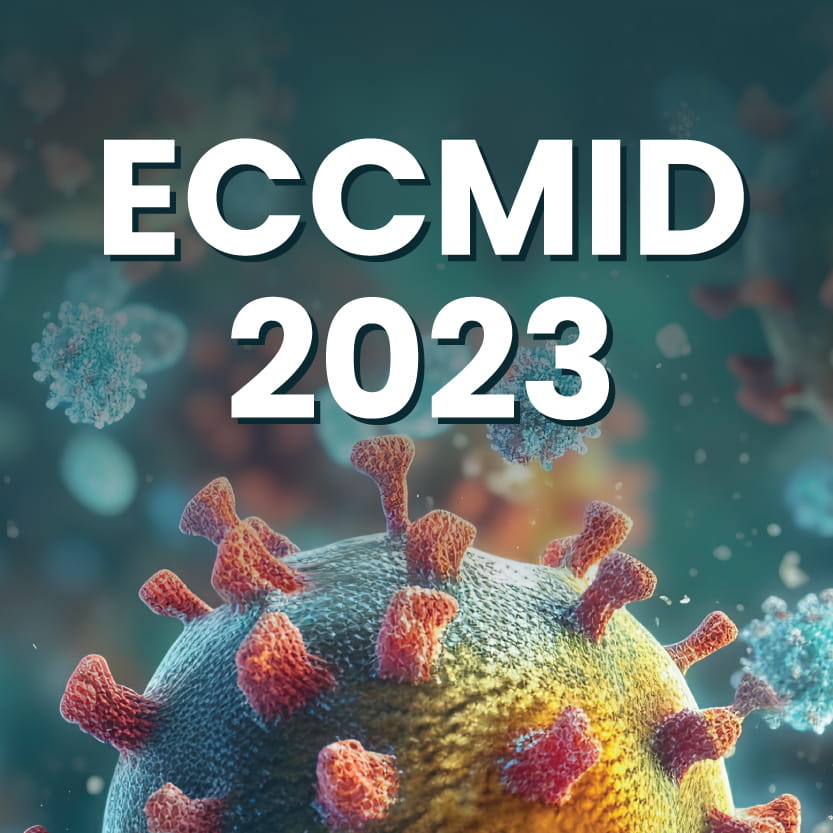The session discusses two case reports on severe skin and soft tissue infection presented in the paediatric population.
A case report of Streptococcus pyogenes soft tissue infection treated without surgical intervention was presented. A 12-month-old male patient presented in the paediatric emergency department with fever every 6 hours, temperature of 40.5˚C, with 2 days of evolution and pain in the right shoulder with limited mobility. He also had a discrete cough and low appetite since the day before. Chickenpox was diagnosed the day before the onset of fever. Ibuprofen was given on the first day of the symptoms. He had no significant family history, and all his vaccines were up to date. On physical examination, vesiculo-papular exanthema with scattered crusts were observed. In addition to redness, heat and swelling right shoulder, while the remaining examination was unremarkable.
Blood test revealed anemia, leukocytosis, and elevated C-reactive protein (CRP). Ultrasound of the shoulder revealed no valvular joint effusion. Thickening and densification of subcutaneous cellular tissue, in relation with inflammatory/infectious process was observed. Soft tissue infection was suspected from these findings. Intravenous acyclovir, clindamycin and flucloxacillin was started. Blood culture test was positive for Streptococcus pyogenes. A hypothesis of necrotizing fasciitis was made after a repeat ultrasound on day 2. After 2 days flucloxacillin was stopped, penicillin and amoxicillin were started. On day 4 magnetic resonance imaging (MRI) revealed elongated fluid collection in the muscles of the posterior aspect of the shoulder. Diffuse edema of the muscular planes with no signs of osteomyelitis. A diagnosis of soft tissue infection was made. At the time of discharge, ultrasound showed no cellulitis and no clear signs of fasciitis. Blood parameters also improved. Key points to the success of this case included that low threshold of suspicion for bacterial over infection if the evolution is not as expected. Early empiric antibiotic therapy and fast transition to targeted antibiotic therapy were the key interventions. In addition to close clinical, analytical, and imaging monitoring.
The second case was on purpura fulminans secondary to varicella-zoster infection in a 4-year-old girl with unknown vaccination status. The child was presented with complaints of bruises spreading from her right leg to the gluteal region 3-4 days after suffering chickenpox, which changed color from red to black during hospitalization. Due to thrombocytopenia and disturbances in the coagulation parameters she received fresh frozen plasma and erythrocyte suspension and was on meropenem therapy. Loss of movement and sensation was reported. Doppler ultrasonography detected arterial thrombosis. The child looked well, on physical examination the following was observed, ecchymotic and purpuric areas on the right leg, right toe necrosis, purpuric area on the left heel area, nonpalpable right foot dorsal pulse, loss of muscle strength and sensation below the right knee, and vesicular lesions scattered on the trunk out of which some were crusted.
Clinical investigations showed she was anemic; fibrinogen levels were quite low and d-dimer levels were high. Computed tomography angiography revealed triphasic current at the popliteal artery. Contrast defect at the midcrural segmental level in the right anterior-posterior tibial and peroneal artery compatible with ischemia and arterial thrombosis. Coagulation cascade protein assays showed very low protein S levels and varicella-zoster virus antibody test was positive.
The child was transferred to pediatric intensive care unit, thrombolytic therapy was discontinued, anticoagulant therapy was started, along with meropenem, teicoplanin and clindamycin treatment. A multi-disciplinary follow-up was done, surgical debridement specimens included, Acinetobacter baumannii, Enterococcus spp., Candida spp., Stenotrophomonas maltophilia, Escherichia Coli, Bacteroides fragilis, Corynebacterium striatum, Methicillin sensitive, Staphylococcus epidermidis, and Streptococcus salivarius. Antibiotic and antifungal therapies were arranged according to the isolated micro-organisms’ antimicrobial and antifungal susceptibility results. The presence of necrotic tissue and insufficient vascularization was observed. It was further concluded that purpura fulminans remains as a clinical diagnosis that requires a high index of suspicion during early patient presentation. It was emphasized that vaccination can prevent Varicella zoster and its life-threatening complications such as purpura fulminans, therefore as pediatricians need to support that every child receives their vaccination.
European Society for Paediatric Infectious Diseases (ESPID) 41st Annual Meeting 2023, 8th May – 12th May 2023, Lisbon, Portugal.

.svg?iar=0&updated=20230109065058&hash=B8F025B8AA9A24E727DBB30EAED272C8)

